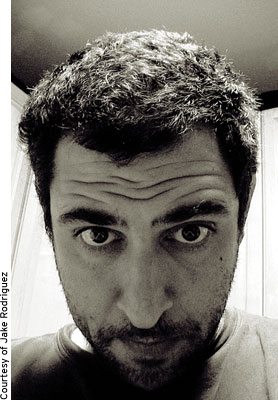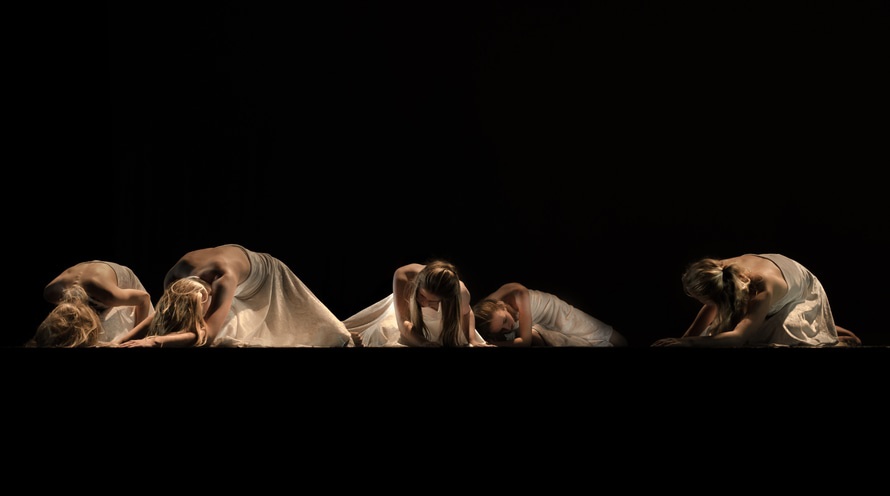An Interview with San Francisco Bay Area theater Sound Designer, Jake Rodriguez
As someone who deals mainly in game audio, you can probably understand why sound for theater isn’t something that I’m a resident expert on. Luckily, for this month’s Sound for Live Theater theme, I was able to catch up with someone who has made a name for himself as a Sound Designer for the San Francisco Bay Area theater community. His name is Jake Rodriguez, and I’ll let him start by introducing himself.
Insert overture here…
“I moved to San Francisco in 1992 to attend San Francisco State. Originally, I intended to do film instead of theater. I wanted to direct, and had started by taking classes in acting. Eventually, college and I didn’t really get along, but since I had met other theater artists, I continued acting. Around that time, I also started playing music, and for a little while, I was acting in small, more fringe theater, at the same time I was doing experimental music. Those worlds didn’t really collide until theater director Mark Jackson, mentioned that I should do the music for the next show we did. So I did. And it was really fun! If I remember correctly, the play was called Brave, and was a piece about America. After Brave, I did a few more pieces where I acted and did the sound and music. Eventually, my interest in acting waned and my interest in doing the sound and music got stronger. I started getting known more for the sound stuff and just kept doing it. I still act every now and then, but most people I know in theater never knew I acted. They only know me in sound.”
After learning about bit more about Jake’s start in theater sound, I started by asking the question: ‘What does someone in theater sound do?’

Act One. Or is it Scene One?
“Sound design, or what’s called sound design in the theater, can be a whole range of jobs, from choosing the sound system’s physical hardware, figuring out where speakers should be placed and what types of power sources are needed, understanding how it gets installed, determining where the microphones go and how they’re worn by the actors, and just purely designing sound that will be used. Frequently, it’s kind of a combination of all that stuff, but at the very least, you have knowledge of system basics and the ability to suss out where sound fits into the show.”
In large budget films (and some independent films as well), the title “Sound Designer” means that your interpretation of the sound, in collaboration with the director’s overall vision, carries great weight. However, this doesn’t hold true for all productions, and certainly breaks down in industries like Game Audio. In this case, that same title feels watered-down, and can be described as someone who only makes sounds. In theater, the title “Sound Designer” remains prestigious. Jake is responsible for not just creating sounds, but for taking ownership of the entire audio experience in a way that enhances the director’s vision and satisfies his own creative instincts.
“I’ve done shows where I have mixed the show, but frequently as a designer, I’ll really only set it up. I’ll be given an A1 who’s going to mix the show, and will work with them during the tech process to show them how I’d like it to be mixed. Once the show opens, I kinda back away. Part of my process is also teaching the stage manager how and where I’d like the sound cues to be placed. I rest on their talents and I don’t get too hands on.”
Before the Casting Call
In discovering more about the role a theater Sound Designer plays, I found myself wondering how early one might be brought onto a show and how much creative freedom they might receive. After all, they are responsible for making the play not only emotionally successful, but also technically successful as well.
“Well, it depends. It depends on how big of a part the director believes sound is. I’m frequently brought in late. But if the Director is somebody that really wants to have me develop with the show, I’ll be brought in fairly early so that I can be involved in design meetings. These meetings are usually with just the Director, the Production Manager (the person responsible for looking at numbers and saying no), and all the designers, including the Set Designer, Costume Designer, Lighting Designer, the Video Designer.”
“When looking over the script, sometimes a playwright will be really descriptive about their sound cues. ‘A musty drip of water comes from off left…’ ‘…this song plays quietly at first, then grows in the echoes, and at this point cuts off.’ Other times, there will be nothing indicated whatsoever. It’s written like a poem. Those design meetings are really free for all. Usually I can imagine black metal. ‘…This would be scored with black metal all the way through…’ By the way, nobody ever goes for that idea.”

From Audio Blackout to Full Spectrum
As a young audio professional, I’m proud to say that I stared out my career wiring studios, building patchbays, and installing sound treatments. But even with all the skills I practiced, what I learned doesn’t come close to the breadth of the technical knowledge that theater Sound Designers need to have.
“If I’m doing a show at ACT (American Conservatory Theatre), I know their A1 has a system set up for me. When I walk into the space, it’s already good to go. At other theaters, maybe there’s no system whatsoever, and I have to completely design it. I say where speakers are going to be mounted, how they’re going to get their power, and what console we’re going to use. For this show I did in New York, the company wasn’t able to fly me out to see the space. And it was a new space that had never had a sound system before. So I was looking at drawings of the space and had to put together a rental package that could support the show based on what I was looking at on paper.”
Beyond installation, I learned from Jake that part of setting up speaker arrays also means measuring and setting appropriate delay compensation.
“Imagine you’re watching a show, and you have two main speakers and a set of smaller speakers to fill in the gaps where the audience isn’t getting the throw of the main speaker. If the audience is looking at an actor onstage speaking into a microphone, I want them to be feeling as though they are naturally hearing his or her voice. I don’t want them to notice the sound from a fill speaker above their head. That’s where the delay helps. If you get the delay time just right, the fill speaker magically disappears. It just feels like you’re just hearing the sound from the main speakers or the actor onstage.”
Wrangling the Control Booth
Once you have figured out the nature of how you’re going to capture and playback audio, there’s the black box of taking live inputs, mixing them with pre-recorded material, and then spitting out sound to a large number of precisely placed speakers. So how is this done?
“Well, there’s software and then there’s hardware. The software that most theater Sound Designers use now is called Q-lab, which is a timeline-based software that allows you to drop in an audio file and direct it to a specific hardware output. So if you have a hardware device that has 16 outputs, in Q-lab, you can split out to each channel individually. You can also start to do your mix that way, by saying ‘okay, full in the main left and right, -10dB in the ones behind that, etc.” Additionally, we use consoles to help us with this process, so you can set up a sort of static mix out of your software into the console and then do all that matrixing in the console.”
What?! I Can’t Hear You!
One of the things I found interesting about listening to Jake describe sound for theater, was hearing a few crazy stories in which Jake had to be incredibly flexible to build creative solutions for unique problems.
“I worked on this one sequence in a play whereby the lead actress was going through a really emotional hardship and delivering a long monologue. Unfortunately, based on her positioning, I couldn’t put a microphone on her. So, I had to create an array of microphones positioned around her. To do this, I tested out using lav mics with a clip-on attachment that made it a boundary mic. Instead of picking up the sound bouncing off her cheek, this mic picked up an area of sound bouncing off a little rubber pad. Using these, we created zones that the actress could move in and out of. And in the end, I was pretty happy with how this solution served the play.”
End Scene
In the time I spent chatting with Jake, I learned about what it means to be a part of theater sound from both the technical and creative perspective. It is a work of art that is as immersive as any great film I’ve seen, even if much more is left up to the imagination. The role of a Sound Designer in theater is pivotal in not only bringing you the sound, but also using it to heighten character, place, and emotion. And I don’t know about you, but I know I’m now pretty excited to go see my next theater performance.

______________________________________________________________________
JAKE RODRIGUEZ (Sound Designer) is a sound designer and composer based out of the San Francisco Bay Area and works at regional theaters around the United States. Recent credits include The Christians at Playwrights Horizons and the Mark Taper Forum; Monstress at American Conservatory Theater; Girlfriend at the Kirk Douglas Theatre; Mr. Burns, a Post-Electric Play at American Conservatory Theater and Guthrie Theater; Thieves at El Portal Theatre; X’s and O’s (A Play About Football) at Berkeley Repertory Theatre and Center Stage; Superheroes at Cutting Ball Theater; The Christians and brownsville song (b-side for tray) at Actors Theatre of Louisville; and Emotional Creature at the Pershing Square Signature Center. Rodriguez is the recipient of a 2004 Princess Grace Award